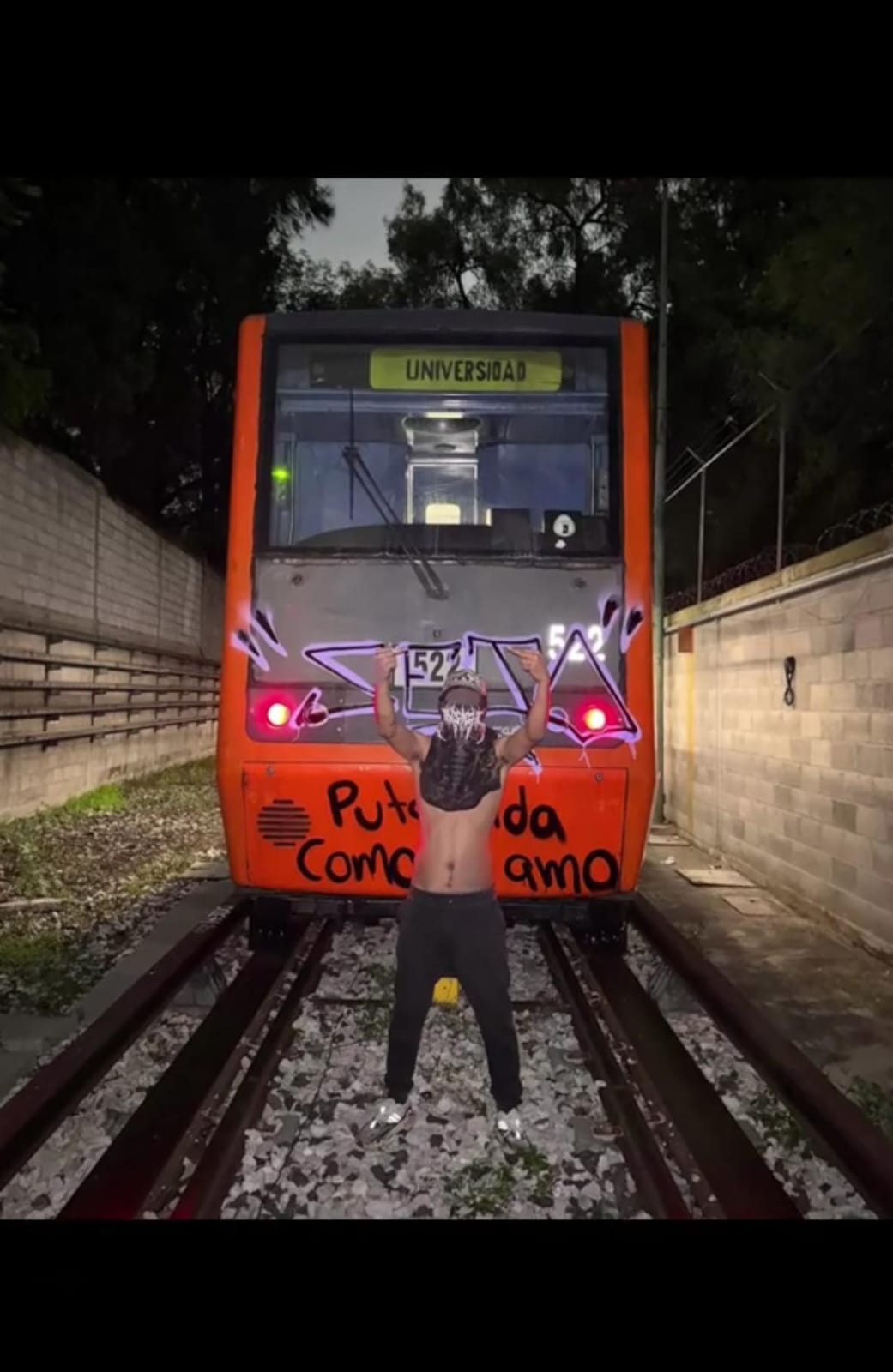A shocking video recently surfaced on social media showing a masked individual posing in front of a vandalized metro train, allegedly from the Mexico City Metro Line 3 (Universidad line). The bold display shows the artist standing on the tracks, shirtless and defiant, with freshly painted graffiti sprawled across the front of the train — blending urban rebellion with raw underground culture.
🖌️ The Act
The metro, marked with the number 522, has been tagged with stylized graffiti and a bold phrase:
“Put*da como te amo”, a controversial message that translates roughly to “Damn it, how I love you” — mixing profanity with passion.
In front of it stands a masked figure, likely the artist, raising his arms in a classic rebellious pose. The entire scene appears carefully staged — filmed or photographed at night, in a restricted metro zone.
🚇 A Growing Trend: Graffiti on Trains
Urban graffiti on metro systems is nothing new — from New York subways in the 80s to Paris RER lines and now Latin American metros, trains have long been viewed as a canvas for street artists, activists, and vandals alike.
But incidents like this raise major concerns:
- 🚨 Security Breach: How did the individual access the tracks undetected?
- 🧼 Public Property Damage: Train cleanup costs taxpayers thousands.
- ⚖️ Legal Consequences: Vandalism on public transport is a criminal offense in most countries.
🎭 Graffiti: Art or Crime?
Supporters of street art claim that metro graffiti is a form of resistance, social expression, or political voice, especially in cities where young people feel silenced or ignored.
Critics argue it’s nothing but destructive vandalism that:
- Disrupts public trust
- Damages infrastructure
- Endangers lives (especially on live tracks)
🌐 Viral Impact
The video, now spreading across TikTok, Instagram, and X (Twitter), has sparked fierce debate online. While some praise the raw energy and message, others demand tighter metro surveillance and punishment for such stunts.
Metro officials have yet to release a statement, but internal sources suggest the video may be under criminal investigation for trespassing and damage to public property.
🧠 Final Thoughts from MetroViral
The metro has always been more than just transport — it’s a reflection of the city’s soul. Acts like this force us to ask:
Are metros becoming a battleground of identity and rebellion, or are they just easy targets for attention-seeking?
In an era where a single video can go viral in minutes, what used to be underground is now global. And somewhere between graffiti and danger, we’re watching the metro become a stage for voices — some artistic, some anarchic, all unavoidable.
All content on https://metroviral.top/ is protected by copyright and is the property of Metro Viral, unless otherwise noted.
Do not copy, reuse, or republish any content from this site without permission.
If you use my content without authorization, I will take legal action.
For any permissions or copyright-related concerns, contact:
📧 legal@metroviral.top
© Metro Viral. All rights reserved.
